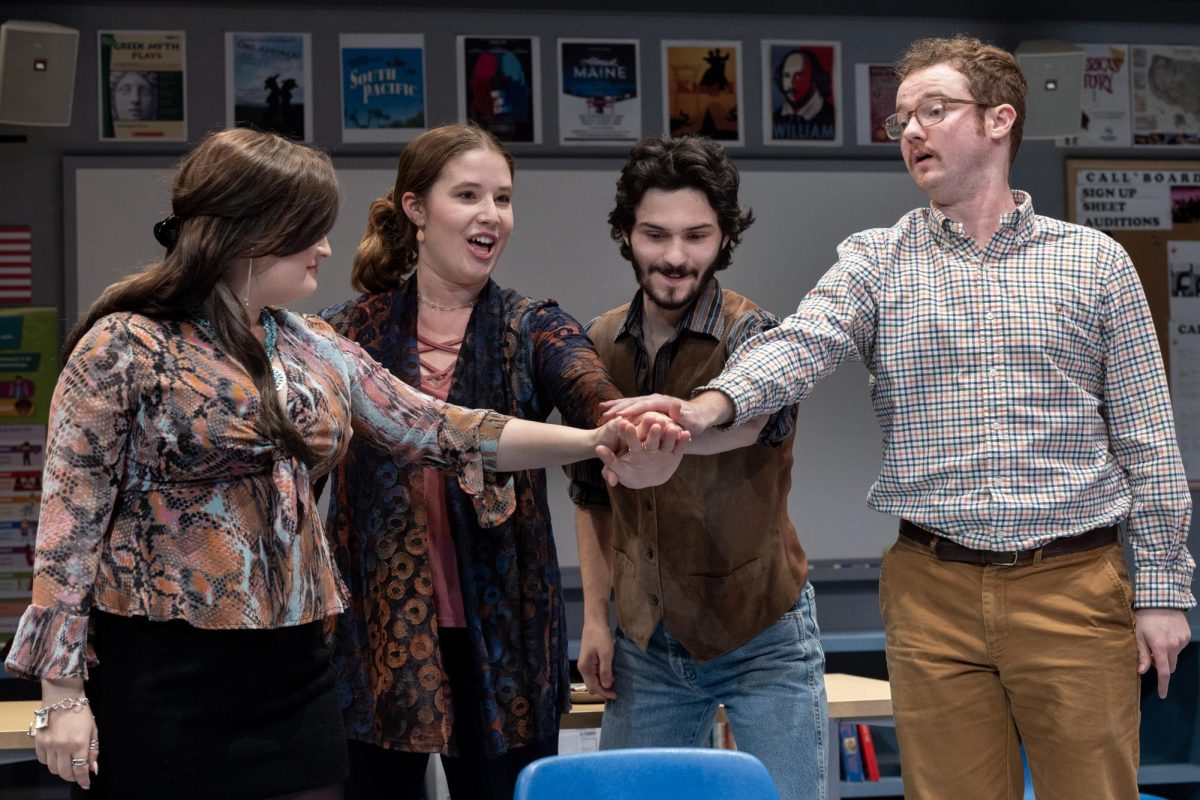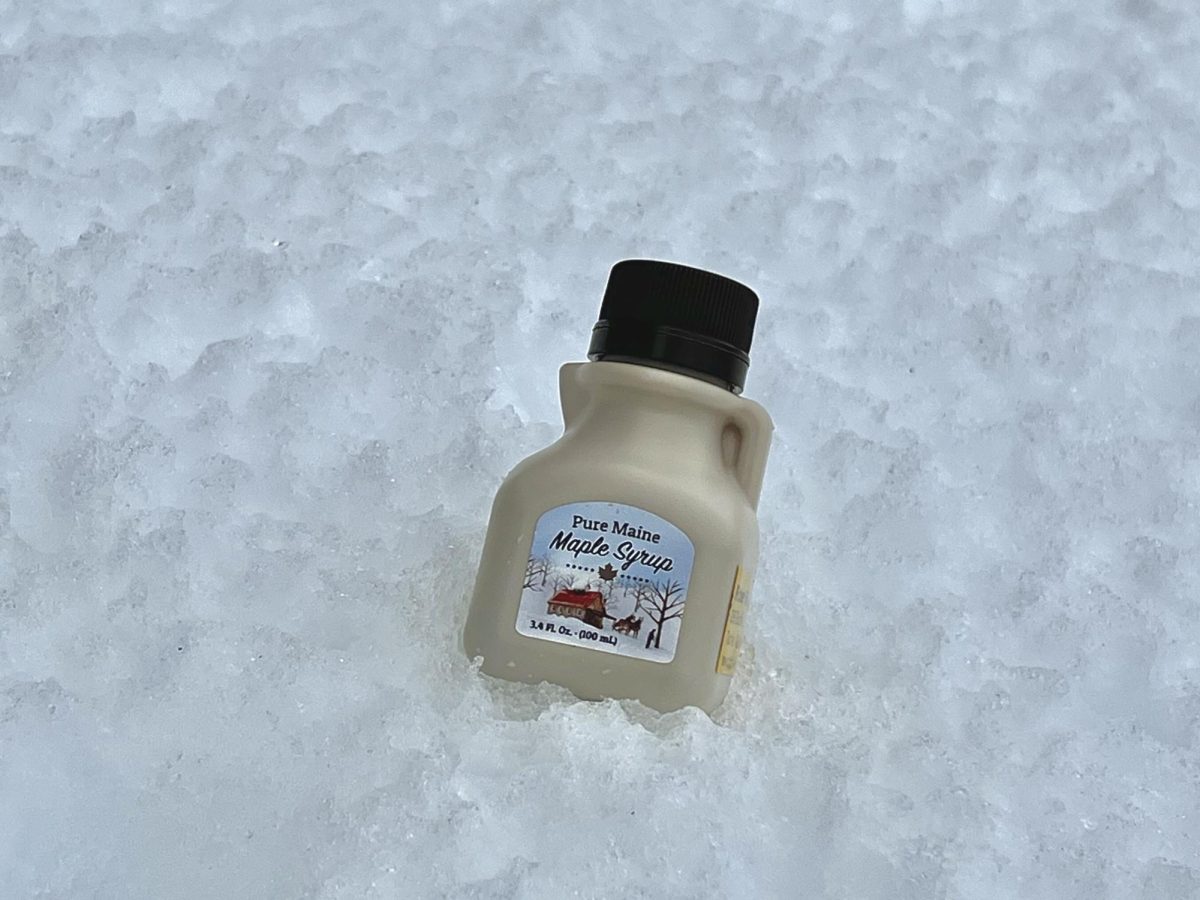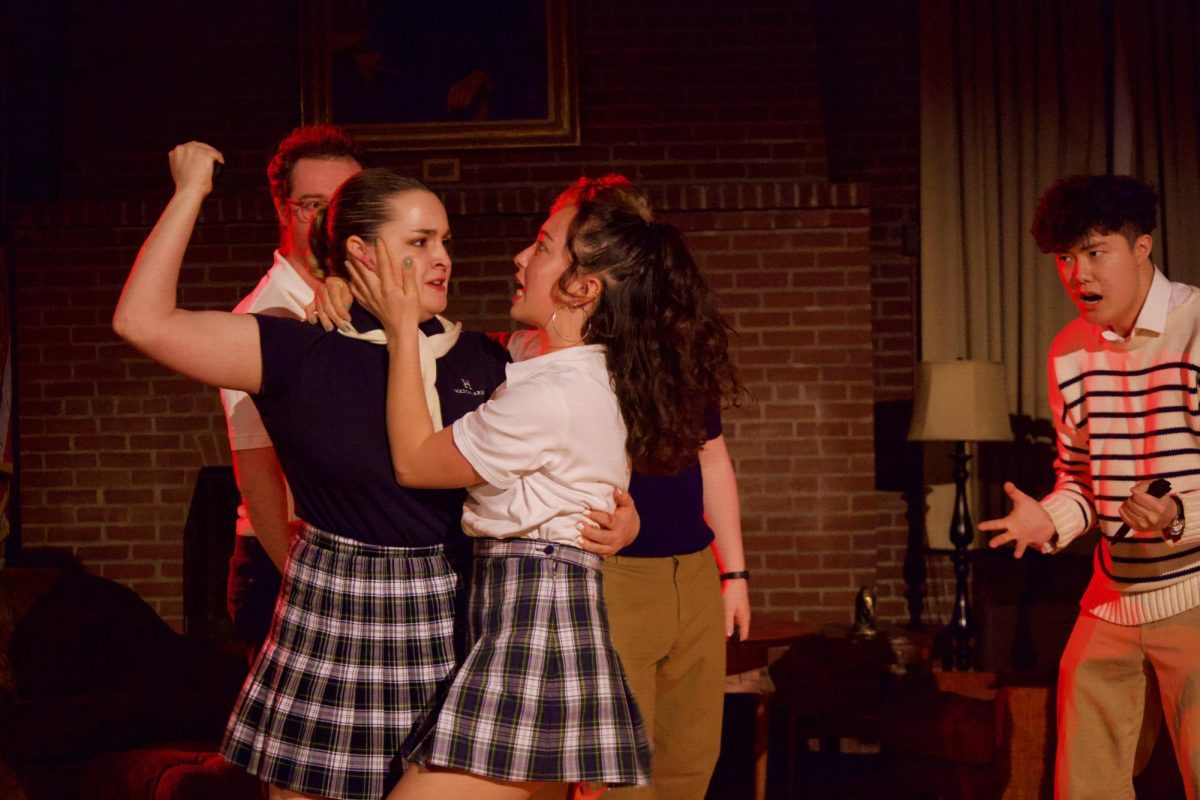The stage is set. The children are bright-eyed. The Pilgrim outfits are clean and crisp. The Indigenous headdresses are stereotypically racist. And most of all, the song is uncomfortably long — nine cringe-inducing verses of children singing about “the natives” giving Thanksgiving gifts of tom-toms, teepees and moccasins — before it finally ends with the projection of a real teacher’s comment from a real early-childhood website, advising fellow educators to “divide students into Indians and Pilgrims, so the Indians can practice sharing.”
It’s a bold first scene. But then, “The Thanksgiving Play” by Lakota playwright Larissa FastHorse, which ran from Nov. 9 to Nov. 13 in Gannett Theater, is a bold play: a biting satire of white liberals, whose audience is usually made up of the very people it skewers.
The play follows four white adults who are nothing (or so they believe) like the teachers who would allow the opening caricature onstage. Instead, they are determined to create a culturally-sensitive Thanksgiving play that honors Indigenous history, tells uncomfortable historical truths and fulfills the meticulous criteria of half a dozen teaching grants. Logan (Paige Magid ’24) and Jaxton (A.J. Matos ’26), who “share a mutually respectful relationship,” are the obsessively progressive theater teacher and the street performer at the heart of it all. Joining them are Caden (David Walker ’24), the awkwardly intelligent elementary school teacher who presents a PowerPoint spanning 4,000 years of history, and the local actress Alicia (Ruby Marden ’27), who submitted a “Native American headshot” for her audition but is not actually Indigenous. The problem quickly becomes obvious: there are no Native actors, and therefore there can be no Native characters. Whatever is to be done?
The proposed solutions are absurd — a dream sequence in which a white character dreams she is Native American, but is still technically a white person and so can be played by a white actor; a scene in which white characters speak their half of dialogue with Native characters and then gaze at the empty seats, imagining replies, to concretize the idea of “erased presence” — but they are taken completely seriously, because Logan and Jaxton (and Caden and Alicia, to a lesser extent) are obsessed with following the rules of progressivism to their logical extremes, and then beyond. In the end, the artistic solution they land on is to present a blank stage: forty-five minutes of “perfectly equitable emptiness,” says Logan. Their thoughtful, enlightened theatrical offering will be … nothing.
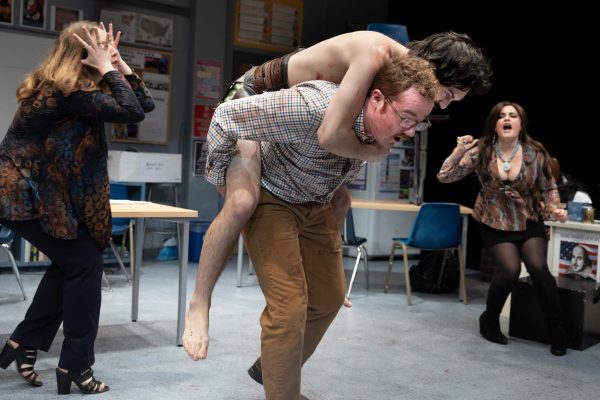
But the thesis of “The Thanksgiving Play” — FastHorse’s, not her characters’ — is that it’s actually worse than nothing: it’s acutely harmful. Near the end of the play, as FastHorse intends, we begin to see the deep offense and violence that has been cloaked by well-intentioned progressivism. There’s the moment when Logan admires Alicia’s ability to be “simple,” without “intellect to get in her way.” Or what about when Jaxton draws a series of tally-marks mathematically “proving” that Native Americans are privileged over white people and argues that there should be a White History Month for reasons of “equity”? Even Caden, so well-educated on the history of Indigenous oppression, ends up dressing in colonizers’ costumes and tossing bloody Indigenous heads around onstage in the name of historical accuracy. By the time we get to the climax, it becomes obvious the characters’ bigotry, despite being filtered through the language of white progressivism, is just as violent as outright racism.
To be clear, it’s a comedy.
As the adage goes, traditional comedy is defined by funny characters who don’t know they’re being funny. Take Logan, for instance. When she insists that she, as a vegan, wants to “lift up the acknowledgement that although my sensitivity about the slaughter of millions of animals, including forty-five million turkeys, is valid, I am conscious of not allowing my personal issue to take up more space in the room,” the humor comes from the fact that we’ve all heard similar enough word-salads of performative wokeism to believe that she’s being completely serious. (We feel the same way when Jaxton responds by affirming that he is a “vegan ally.”)
But a funny script does not necessarily a funny production make, and much of the heavy lifting of “The Thanksgiving Play” at Bates is done by Magid, Matos, Marden and Walker, all gifted comic actors who don’t lose touch with the serious undertones. Matos, as Jaxton, stands out for doing a particularly good job of playing a character who is both completely earnest and completely ridiculous, without his performance becoming parodic. Marden and Walker nail the particularities and peculiarities of their characters, especially in their vocal and physical performances. And Magid as Logan is stellar as the closest thing this play has to a protagonist or audience surrogate, delivering a wonderfully genuine performance that never feels forced even as it plunges from joy to despair to horror; she is also particularly good at acting and reacting in character when she is not the focus of the scene. All four are fearless in completely committing to uncomfortable characters and have excellent chemistry; as an ensemble, they excel.
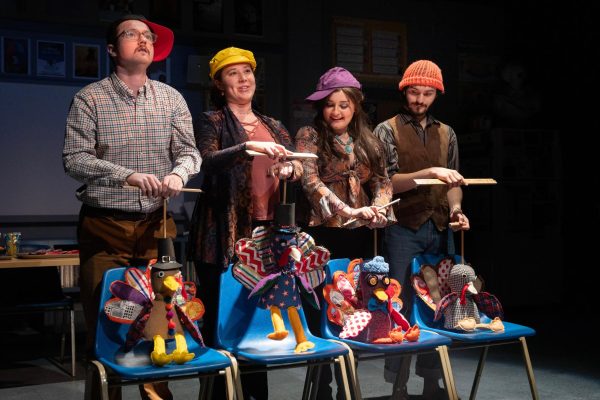
Their success is supported by a robust team of students and staff behind the scenes. John Bear Mitchell, a Wabanaki storyteller and lecturer at the University of Maine, served as the play’s cultural consultant, leading discussions with students throughout the rehearsal process; Bates Associate Professor of History Joe Hall was the academic consultant. Germán Cardenás-Alaminos designed an intricately chaotic set, a high-school classroom with posters plastering the walls and papers spilling everywhere. Prof. Carol Farrell shines as the costume designer and the puppeteer, who brings vibrant creativity to designing the four scenes, like the opening, that are children’s performances and school projects: once the actors wear doll bodies evoking children, once they manipulate turkey marionettes, once they use a puppet theater. Lights were designed by Prof. Michael Reidy; sound and projections were designed by Sammy Weidenthal ’27. It’s all held together by Stage Manager Mikayla Burse ’26 and her ASMs Maia Seigerman ’26 and Xuchen Zheng ’27. The pieces are seamless, and it leads to a play that allows the audience to be fully immersed and enraptured by the horror and the humor in equal measure. In short, this production works.
That doesn’t mean it was smooth sailing to get here. There has been controversy among students about the Bates Theater and Dance Department, which has consistently struggled to provide an inclusive environment for students and faculty of color, choosing to produce a play that demands all of its actors be white-passing. Mitchell provided an Indigenous voice in the rehearsal process, but the play was ultimately under the control of a white director, Prof. Tim Dugan. The cast and crew have participated in cultural workshops and frank discussions about politics and race, but the department’s choice to produce an all-white show has still raised some eyebrows.
Ultimately, whether this play can ever be fully successful at an institution like Bates — a loudly progressive school that has faced criticism for focusing on Indigenous trauma to the detriment of its Indigenous students — is open to debate. “The Thanksgiving Play” is about well-meaning white people doing further harm to communities of color by deciding how and when their stories will be told onstage, which at times seems almost too reminiscent of the department itself to land properly. By producing this play, Bates Theater and Dance is critiquing the problems of white liberalism, but are they doing so in a way that allows them to appear wise to the issues without actually addressing them where they arise in the real-life department? To that end, can any theater company meaningfully rectify their problematic and racist histories by producing an all-white play? It’s a fair question.
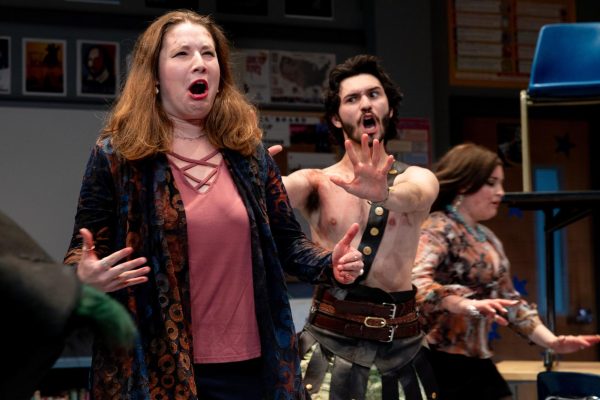
But theater companies aren’t their actors, and academic departments are not their students. The Bates students involved do wonderfully in grappling with the difficult questions that the play raises. Offstage, Magid, Matos, Marden and Walker show real thoughtfulness and care in thinking and talking about the good, the bad and the ugly of white progressivism. Onstage, they are the people who hold all of the power to make or break the show, and they rise to the occasion brilliantly.
If you weren’t able to get tickets to see their power, FastHorse’s script is still worth a read (pro tip: the Bates library has physical and digital copies). It’s genuinely laugh-out-loud funny even as it deals with some of the most horrific parts of American history, and that is no small feat.


